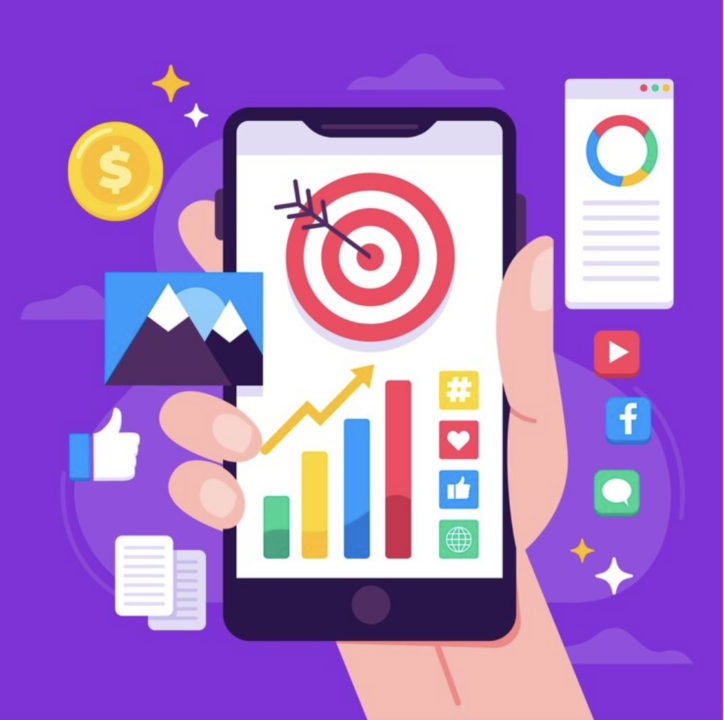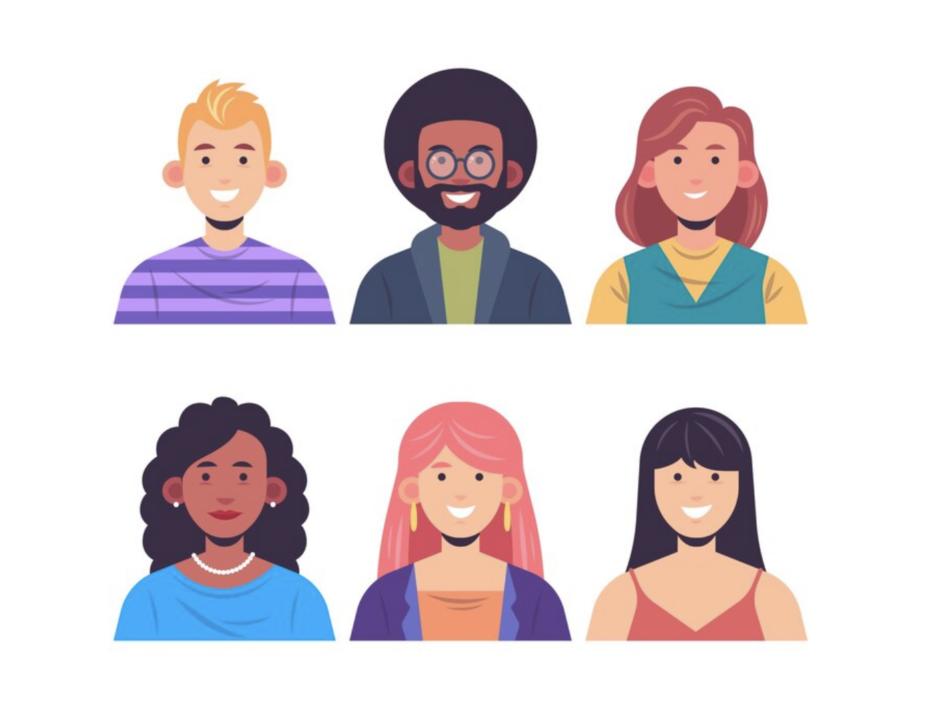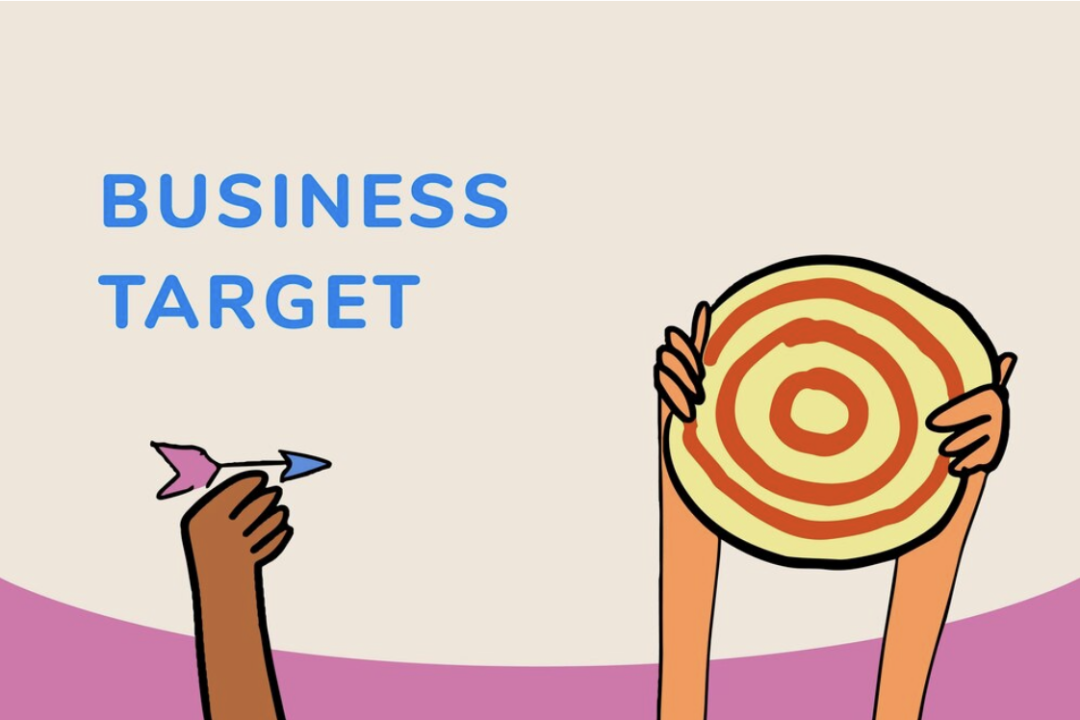
Audience Targeting Tips to Reach the Right Users for Your Mobile App
In today’s saturated mobile app market, standing out is no easy feat. With millions of apps available, how do you ensure that your app reaches the right audience? The answer lies in effective audience targeting. Audience targeting is more than just getting your app in front of as many eyes as possible; it’s about ensuring that your app lands in the hands of users who will love, engage with, and advocate for your product. In this post, we’ll share crucial audience targeting tips to help you connect with the right users for your mobile app.
How to Find the Target Audience for a Mobile App?
Finding the right audience is the cornerstone of any successful app marketing strategy. If you skip this step, you may find yourself spending resources on users who aren’t interested in what your app offers. Here are some practical audience targeting tips to ensure you’re on the right path:
1. Understand Your App’s Purpose and Value Proposition
Before you even think about who your audience is, you need to be crystal clear on what your app does and why it’s valuable. Ask yourself:
- What problem does my app solve?
- What features make it stand out from the competition?
- Who would benefit the most from using this app?
By answering these questions, you’ll gain insight into the type of users who would find your app most valuable.
2. Analyze Your Competitors
Look at apps similar to yours and analyze their user base. Tools like Mobile Action, Data.ai or Sensor Tower can provide demographic data on your competitors’ audiences. Pay attention to:
- Age
- Gender
- Location
- User interests
This information can help you pinpoint who your target audience should be.
3. Create User Personas
User personas are fictional characters that represent different segments of your target audience. They are created based on real data and insights gathered from your research. These personas serve as a guide for developing marketing strategies, designing features, and crafting messages that resonate with your audience. Here’s how to create and use user personas effectively:
Gather Data
Before creating a persona, you need to gather as much information as possible about your potential users. This data can come from various sources, such as:
- Surveys and Interviews: Conduct surveys or interviews with your existing users or potential customers to understand their needs, preferences, and challenges.
- Analytics: Use tools like Google Analytics, Firebase, or other analytics platforms to collect demographic information, behavior patterns, and user engagement data.
- Social Media Insights: Analyze the social media profiles of your users or followers to gain insights into their interests, activities, and the content they engage with.
- Competitor Analysis: Look at your competitors’ user base and gather information on who is using similar apps.
Identify Key Segments
Once you have collected the data, the next step is to identify key segments within your audience. Not all users will have the same needs or behaviors, so it’s essential to categorize them into groups based on shared characteristics. These segments could be based on factors such as age, gender, location, occupation, or specific pain points.
Develop Detailed Personas
Now that you have identified your key audience segments, it’s time to create detailed personas. Each persona should be a well-rounded character that represents a particular user group. Here’s what to include:
- Name and Demographics: Give your persona a name and demographic details such as age, gender, education level, and income. For example, “Sarah, 28, a marketing professional living in New York City.”
- Occupation and Background: Describe your persona’s occupation, job responsibilities, and any relevant background information. This helps you understand how your app fits into their daily life. For instance, “Sarah works as a digital marketing manager and spends a lot of time analyzing data and creating campaigns.”
- Goals and Motivations: Outline what your persona wants to achieve and what drives them. For example, “Sarah’s goal is to streamline her marketing efforts and improve ROI. She is motivated by efficiency and results.”
- Hobbies and Interests: Include hobbies, interests, and activities your persona enjoys. This helps in creating content and features that appeal to them. For example, “Sarah enjoys attending industry conferences, reading marketing blogs, and networking with peers.”
- Pain Points and Challenges: Identify the specific problems or challenges your persona faces that your app can solve. For instance, “Sarah struggles with managing multiple marketing channels and tracking the effectiveness of her campaigns.”
- Technology and App Usage: Describe the persona’s comfort level with technology, preferred devices, and app usage patterns. For example, “Sarah is tech-savvy, uses a smartphone for most tasks, and prefers apps that integrate with her existing marketing tools.”
- Quotes and Scenarios: Include direct quotes from user interviews or hypothetical scenarios that illustrate how your persona interacts with your app. For instance, “I need an app that can track my campaign metrics in real-time without switching between multiple platforms.”
Visualize Your Personas
Once your personas are developed, create visual representations of them. This could be a simple profile card with the persona’s name, photo, and key details, or a more detailed infographic that outlines their characteristics, goals, and challenges. Visualizing personas helps your team internalize them and keep them in mind during the development and marketing process.
Use Personas in Decision-Making
User personas are not just theoretical exercises; they should actively guide your marketing and development efforts. Here’s how to use them effectively:
- Content Creation: Tailor your content (blog posts, social media updates, email campaigns) to address the needs, interests, and pain points of each persona. For example, create how-to guides, case studies, or success stories that resonate with “Sarah” and her challenges.
- Feature Development: When developing new features or improving existing ones, refer to your personas to ensure the changes meet their needs. For instance, if “Sarah” values efficiency, consider adding features that streamline workflows or integrate with other marketing tools.
- Ad Targeting: Use your personas to create more targeted and effective ad campaigns. Knowing “Sarah” spends time on LinkedIn and reads marketing blogs, you can place ads where she is most likely to see them.
- User Experience (UX) Design: Design your app’s user interface with your personas in mind. For example, ensure the app is easy to navigate for “Sarah” and that key features are accessible and intuitive.
Review and Update Personas
User personas should evolve as your app grows and as you gather more data. Regularly review and update your personas to reflect changes in your audience’s needs, preferences, and behavior. This ensures your marketing and development efforts remain aligned with your target users.
By creating and utilizing detailed user personas, you can ensure that every aspect of your app—from its design to its marketing—resonates with the people who matter most: your users. This targeted approach not only helps attract and retain the right audience but also enhances the overall user experience, leading to higher engagement and satisfaction.
Use Analytics Tools
Leverage analytics tools like Google Analytics, Firebase, or Mixpanel to gather data on your existing users. These tools can tell you who is using your app, how they found it, and what features they engage with the most. This data is invaluable for refining your target audience.
How Do You Attract the Right Target Audience?
Once you’ve identified your target audience, the next step is to attract them. Here are some audience targeting tips to help you draw in the right users:
1. Optimize Your App Store Listing
Your app store listing is often the first impression potential users will have of your app. Make sure it speaks directly to your target audience by:
- Using keywords that resonate with their needs and interests
- Crafting a compelling app description that highlights the app’s benefits
- Designing eye-catching visuals that appeal to your target demographic
Remember, your goal is to make your app irresistible to the users you want to attract.
2. Leverage Social Media
Social media platforms are powerful tools for reaching your target audience. Use platforms like Facebook, Instagram, Twitter, and LinkedIn to:
- Share engaging content that resonates with your audience
- Run targeted ads that reach users based on their interests and behaviors
- Engage with your followers through comments, polls, and direct messages
When done right, social media can be a goldmine for attracting the right users.
3. Utilize Influencer Marketing
Influencers have the power to sway the opinions of their followers. Partnering with influencers who align with your app’s niche can introduce your app to a broader audience that trusts the influencer’s recommendations. When choosing influencers, make sure their followers match your target audience’s demographics and interests.
4. Offer Incentives
Everyone loves a good deal. Consider offering incentives like discounts, free trials, or in-app rewards to encourage potential users to download and engage with your app. These incentives should be marketed directly to your target audience to maximize their effectiveness.
How Do You Target the Right Audience for Your Content?
Content is king, but only if it reaches the right people. Here are some audience targeting tips to ensure your content resonates with your ideal users:
1. Tailor Content to User Personas
Remember those user personas you created earlier? Use them to guide your content creation. Whether it’s blog posts, videos, or social media content, ensure that each piece speaks directly to the needs, interests, and pain points of your target audience.
2. Utilize SEO and ASO Strategies
Search Engine Optimization (SEO) and App Store Optimization (ASO) are crucial for ensuring your content and app are discoverable by your target audience. Use keywords that your target users are likely to search for, and incorporate them naturally into your content. This will help your app and related content appear in relevant search results, driving the right traffic to your app store listing.
3. Segment Your Audience
Not all users are the same, even within your target audience. Segment your audience based on factors like user behavior, location, and device type, and tailor your content to each segment. This personalized approach can significantly increase engagement and conversion rates.
4. Run Targeted Ads
Paid advertising can be an effective way to reach your target audience, but only if done correctly. Platforms like Google Ads, Facebook Ads, and Apple Search Ads allow you to target users based on demographics, interests, and behaviors. Make sure your ad copy is compelling and speaks directly to the needs of your target audience.
What is the Target Market for Mobile Apps?
Understanding the broader target market for mobile apps can help you position your app more effectively. Here are some audience targeting tips to consider:
1. Market Segmentation
The mobile app market can be segmented into several categories, such as:
- Age: Different age groups have different app usage patterns. For instance, younger users may prefer gaming or social media apps, while older users might lean towards productivity or health apps.
- Gender: Some apps cater specifically to one gender, while others appeal to both.
- Location: Regional preferences can influence app popularity. Understanding cultural differences and local trends can help you tailor your app to specific markets.
2. User Behavior
Understanding user behavior is key to targeting the right market. Consider the following:
- Time Spent: How much time do users spend on your app? Apps with high engagement rates are more likely to retain users.
- In-App Purchases: Do users make purchases within your app? If so, what motivates them to do so?
- User Feedback: Regularly collecting and analyzing user feedback can provide insights into what your target market wants and needs.
3. Industry Trends
Keep an eye on industry trends to stay ahead of the curve. For instance, the rise of AI, AR, and VR in mobile apps opens new opportunities for targeting tech-savvy users. Similarly, the growing focus on privacy and data security might influence how you market your app to users concerned about these issues.
4. Competitive Analysis
Analyzing the target market of your competitors can also provide valuable insights. Look at which markets your competitors are targeting and how they’re positioning their apps. This can help you identify gaps in the market that your app can fill.
Level Up Your Audience Targeting Strategy
Audience targeting is the foundation of any successful mobile app marketing strategy. By following these audience targeting tips, you can ensure that your app reaches users who will not only download it but also engage with it and recommend it to others. From understanding your app’s value proposition to leveraging social media and influencer marketing, these strategies will help you attract the right users and keep them coming back.
Ready to take your app marketing to the next level? At ShyftUp, we specialize in user acquisition for apps. Our team of experts is here to help you refine your audience targeting strategy and grow your user base. Contact us today to learn more about how we can help you reach the right users for your mobile app.
How to Find the Target Audience for a Mobile App?
1. Understand Your App’s Purpose and Value Proposition
Use Personas in Decision-Making
How Do You Attract the Right Target Audience?
1. Optimize Your App Store Listing
3. Utilize Influencer Marketing
How Do You Target the Right Audience for Your Content?
1. Tailor Content to User Personas
2. Utilize SEO and ASO Strategies


